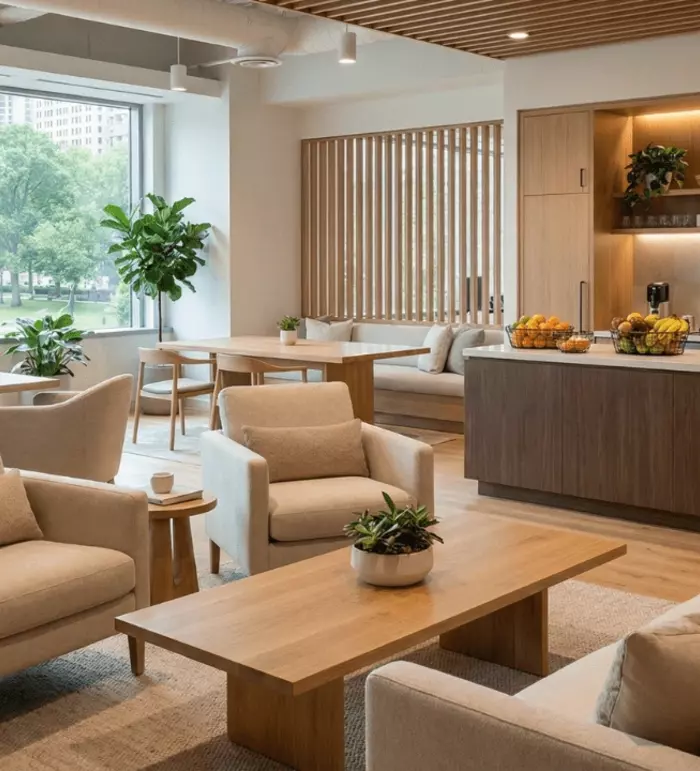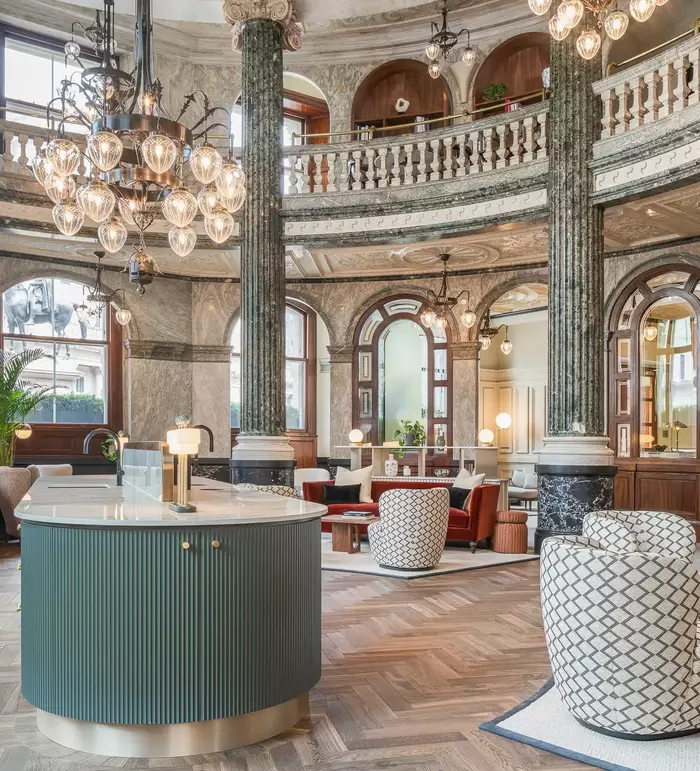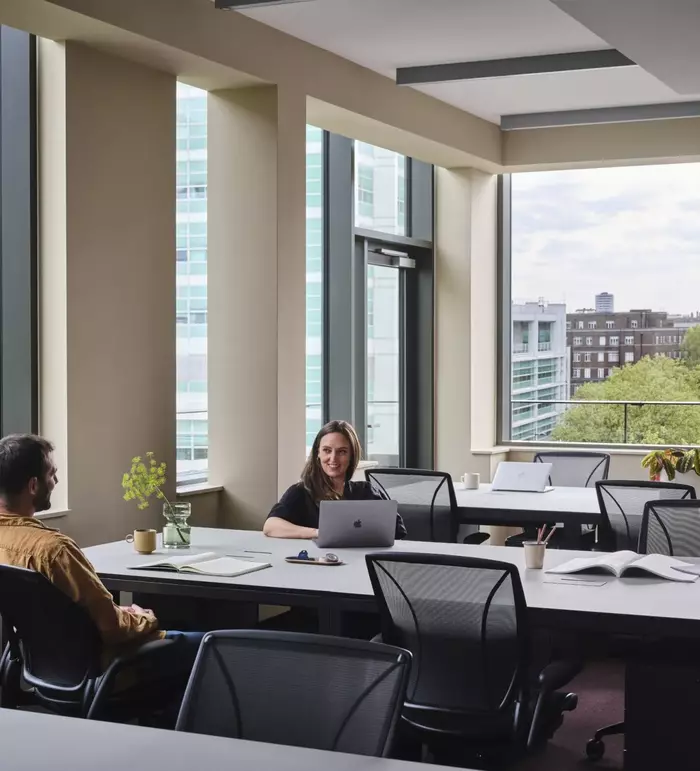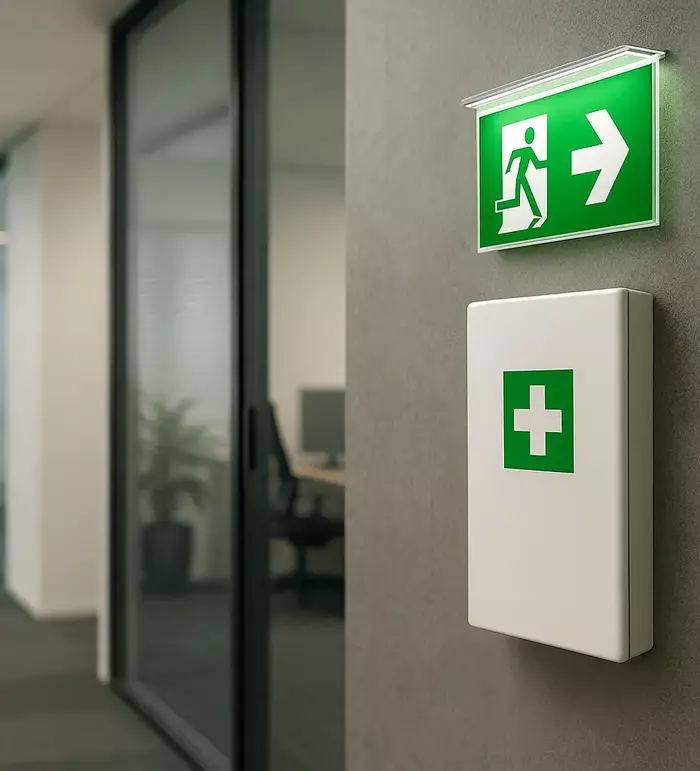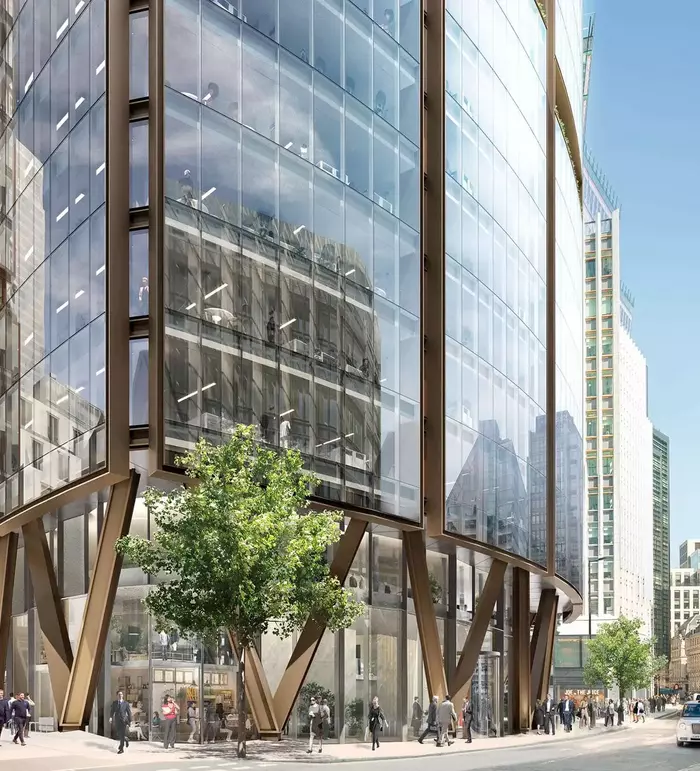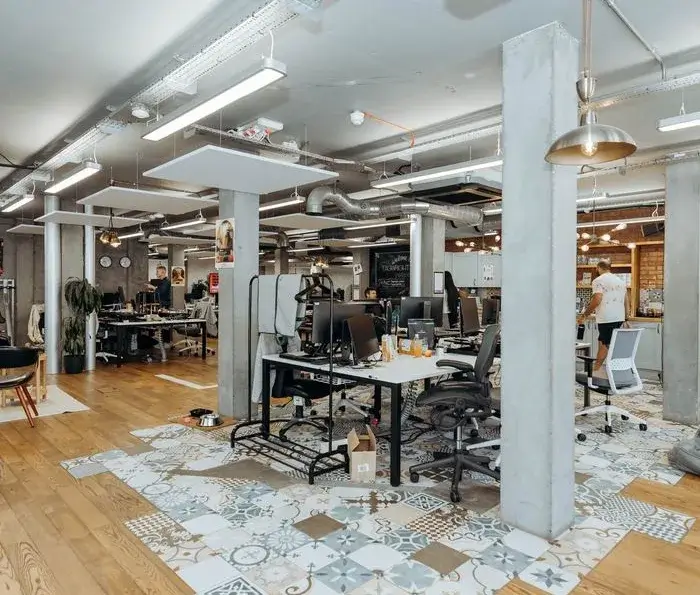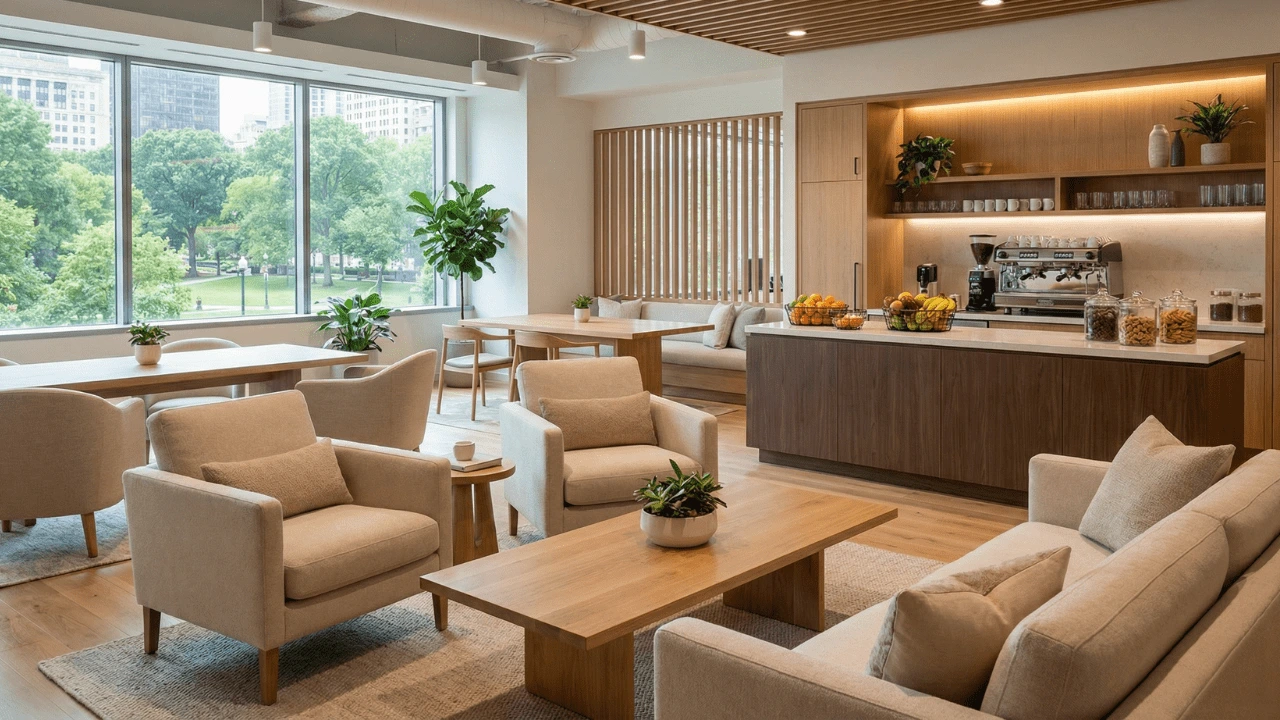Hybrid is here to stay, so the question is not whether people return to the office, but why they would choose to. An office amenities strategy should answer that in plain terms. It connects what your people need on their best days at work with the space, services and settings that make those days happen more often.
If you are planning a move or simply rethinking your current space, start with the outcome you want, better attendance because work is easier, faster and more rewarding onsite. Amenities are not a shopping list, they are a tool to remove friction, create focus and spark connection. If you need support aligning those choices to a specific location, our advisors can help you compare office space in London and understand what each building really offers.
At Flexioffices, we match businesses to spaces across the UK, with access to the vast majority of workspace options and a service model that prioritises people and outcomes. That perspective informs this guide to an office amenities strategy that actually drives attendance.
Key takeaways
- An effective office amenities strategy links settings to tasks.
- Measure what matters, focus, collaboration and social energy.
- Choose amenities that remove friction first, then add delight.
- Pilot, gather data, then scale the wins across locations.
- Match amenities to teams and roles, not generic trends.
What "office amenities strategy" really means
An office amenities strategy is a plan that ties the mix of amenities in your building to the activities your people perform on their most valuable days in the office. It works when it raises the odds that coming in helps them do better work, not just meet a mandate.
Across 2024 and 2025, workplace thinking has shifted from a presence mindset to a performance mindset. Organisations are focusing on how space supports outcomes, not only how many bodies are at desks. Evidence from the Gensler Research Institute highlights the need to align space with work modes across a range of activities, which fits the move toward choice and variety.
In the UK, hybrid working remains common, with a significant minority mixing home and office each week. The Office for National Statistics reports a steady share of working adults hybrid working, which means your office must compete with home for certain tasks, while offering advantages that home cannot.
From wishlist to business case
A good strategy starts by mapping the work you want to attract back in. Identify the moments when being co-located is superior to working remotely, then design the amenity set that makes those moments seamless. Independent frameworks such as Leesman's workplace experience benchmarks and guidance from the British Council for Offices help translate needs into requirements, from a variety of spaces to support different activity types.
If you are weighing managed, serviced or leased options, this mapping also informs the product you choose. Our guide to serviced office space explains how plug and play solutions bundle many of the amenities discussed here, which can accelerate delivery and de-risk your pilot.
The three attendance drivers you can measure
There are three simple reasons people will choose the office on any given day, they will get high quality focus time, they will make faster progress with others, or they will rebuild social energy. Design your office amenities strategy around these, then track them in a lightweight dashboard.
First, focus time. Many employees come in for deep, distraction-free work when home is noisy or cramped. Focus amenities include quiet rooms with acoustic separation, bookable phone booths, good task lighting, plug points where people need them, and predictable temperature and air quality. Baseline welfare requirements still matter. HSE guidance sets expectations for basics such as suitable lighting, ventilation and rest areas, which are prerequisites for any higher-order amenity to have an impact, see Health and Safety Executive.
Second, progress with others. People attend because certain problems are solved faster face-to-face. Prioritise a spread of collaboration settings, from enclosed two-to-four person rooms for decision sprints to tech-equipped project spaces that support hybrid participation without faff. Research from the Gensler Research Institute reinforces the value of workplaces designed for performance across a range of activities, not just rows of desks.
Third, social energy. Humans are social learners. High quality social spaces, informal lounges and refresh points make it easy to bump into colleagues and rebuild trust. Programmed moments, from team breakfasts to learning sessions, are amplified by amenities like a central café or a library lounge that signal welcome and encourage dwell time.
Focus, teamwork, social energy
Translate these drivers into a weekly rhythm. If your engineering team needs uninterrupted focus on Mondays, ensure quiet areas and bookable booths do not get swallowed by ad-hoc calls. If Wednesdays are for cross-function workshops, your mid-size rooms and digital whiteboards should be in perfect working order. The aim is to match amenity supply to the predictable demand curve of your organisation, then communicate it clearly.
Flexioffices advisors can help you shortlist spaces in the City of London with the right balance of focus rooms and collaboration suites, so you do not pay for glossy extras that sit idle.
Amenities that reliably move the needle in 2025
Not all amenities are equal. The ones below consistently improve the quality of in-office days because they remove friction, then add delight. Start here, validate with data, then expand as you learn what your teams use most.
Friction busters. High density of acoustic phone booths and small focus rooms reduces the scramble for quiet. Reliable meeting technology, especially rooms designed for seamless hybrid participation, prevents the five minute "can you hear me" tax. Lockers near work zones remove the bag under the desk problem. A clear power and charging strategy avoids the cable hunt. Kitchens with filtered water, coffee and healthy snacks save time and encourage informal connection.
Task-based variety. A balanced mix of collaboration and individual seats is common in hybrid-optimised offices, but the distribution matters. Blend enclosed rooms, open project tables, touchdown bars and soft seating. Higher performing workplaces offer a greater choice of effective spaces, which aligns with what we see in buildings that retain strong attendance, as covered by the Gensler Research Institute.
Wellbeing. Natural light, plants and adjustable task lighting improve comfort. Showers and a small wellness room support active commutes and privacy needs. Basic welfare facilities are non-negotiable, and HSE guidance sets clear expectations for toilets, wash stations and rest areas. Treat these as the foundation for any wellbeing promise you make, as stated by the Health and Safety Executive.
If you plan to change locations, browse our current London offices and example listings to see how amenities vary by building and operator. Many serviced spaces bundle booths, meeting rooms and wellness features as standard, which can simplify your roll-out compared to a full fit-out.
Quick wins you can ship in 90 days
Short, targeted upgrades often beat long projects. The following moves create visible improvements for the most common pain points, while giving you clean metrics to track. Pair each move with a clear message to staff, so people know what changed and how to use it well.
Sequence these quick wins before larger works. They require little disruption, they are easy to test, and they produce fast feedback that shapes your next investment.
- Add two phone booths per 24 desks, this eases call overflow and preserves focus zones.
- Upgrade meeting room kits with reliable cameras, sound bars and big screens, publish a one page join guide.
- Re-zone a low use area as a library quiet space with soft partitions, desk lamps and clear etiquette.
- Launch a weekly together day with morning stand ups in the café and project rooms blocked for decision sprints.
- Introduce personal storage near team zones to reduce desk clutter and speed setup.
To see how this looks on the ground, compare spaces in Manchester where a number of buildings already bake in the above amenities, which can cut the lead time between decision and first day in.
How to tailor amenities by team and task
Different roles come in for different reasons. Your amenities mix should reflect that, not flatten it. Sales and partnerships teams need high energy collaboration and quick access to well equipped call rooms. Product and engineering need protected focus areas adjacent to project spaces where they can switch into group mode without moving floors. Finance teams benefit from enclosed small rooms and clear desk policies for sensitive work.
Start with a simple survey that asks, what makes an in-office day great for you, what makes it poor, and which amenities would tip you into coming in more often for specific tasks. The aim is to cluster needs by team and seniority rather than treat every suggestion as equal. The Leesman Index offers a way to structure the questions and interpret the results with a focus on experience, not just attendance.
If you are evaluating a managed versus serviced approach, our explainer on office models and fit for purpose choices sets out how amenity provision differs between them and what that means for cost, control and speed.
Roles, personas and work patterns
You can tailor the environment by broad preference sets. Decision makers often value fast, private rooms for sensitive calls. Highly collaborative roles look for open project zones with writable walls. Steadiness oriented roles may prefer predictable, calm spaces. Conscientious roles want tools, data and privacy to complete detailed work without interruption.
Flexioffices focuses on people centred support and tailored solutions across these needs. That is exactly the point of an effective amenities plan, to match the space and services to the moments that matter most for each team.
Budgeting, sequencing and proving ROI
A strong office amenities strategy does not have to be expensive, but it must be staged. Invest in the high leverage friction busters first, then layer in variety and wellbeing, then add brand specific touches. Many organisations pilot on a single floor, learn quickly, and scale.
Set a clear baseline for attendance, meeting outcomes and time to start metrics. Track the percentage of meetings that begin on time, the average time to find a quiet call room, and the utilisation of collaboration spaces versus individual seats. Combine this with monthly sentiment data. The aim is to link amenities to time saved and decisions accelerated.
Hybrid patterns are still evolving in the UK, and national figures show a steady proportion of hybrid workers. Your ROI argument is not about chasing a moving target, it is about making the office the best place for specific types of work on specific days. When you can show that a Wednesday in office workshop resolves more issues than three online sessions, your amenity spend becomes a productivity case, not a cost.
If you are considering a new location to make these upgrades simpler, talk to our team about spaces where operators handle maintenance, IT and meeting tech. You can start by scanning our blog insights for current building examples and amenity ideas that are worth piloting.
A simple metrics dashboard
Keep measurements lightweight and regular. Publish the dashboard monthly and tie it to a short action plan, a small change every month is better than a grand redesign next year. Many serviced buildings allow you to reconfigure space without capital spend, which keeps momentum high.
- Attendance by team on target together days.
- Meeting start time reliability and hybrid join success.
- Phone booth and small room utilisation, peak times and unmet demand.
- Focus satisfaction score and collaboration satisfaction score.
- Space switch time, for example, moving from solo work to group work within five minutes.
Where Flexioffices can help
Choosing the right building is half the job. The other half is matching your amenity plan to that building's reality. Because we cover serviced, managed and leased options across the UK, we can show you a fast shortlist of spaces that score well on the exact amenities your teams will use. That includes simple friction busters like dense phone booths and reliable hybrid meeting rooms, through to wellness and café zones that drive social energy.
Clients value our problem solving and above and beyond attitude, along with deep market coverage and 24/7 support. These values guide how we design shortlists, negotiate upgrades with operators and follow through after move in to ensure your amenity plan is working as intended. If you are new to this, start with a free consultation to define the moments you want to bring back in, then test them in a building where the essentials are already in place.
To see what is available today, explore current City of London spaces or browse a few London listings with amenity highlights. We can also help you compare amenity sets in other cities, including Manchester workspaces, to build a national approach that still respects local needs.
Conclusion
An effective office amenities strategy is not about adding shiny things, it is about helping your people do their best work on the days that matter. Focus on removing friction, building the right variety of spaces and nurturing social energy. Pilot quickly, measure what counts and scale what works. With the right building and a simple, evidence led plan, attendance follows naturally.
FAQs
What amenities have the strongest link to attendance right now?
Amenities that remove friction have the clearest link, phone booths, reliable hybrid meeting tech, small focus rooms and convenient personal storage. From there, add variety and wellbeing features that support the specific tasks your people do at their best in office days.
How do we know if our amenities are working?
Track attendance on set together days, meeting start time reliability and booth utilisation. Pair this with short monthly sentiment polls and compare to a pre-change baseline, then share a one page actions summary each month.
Are there any standards or rules we must meet?
Yes. HSE guidance sets expectations for welfare facilities, lighting, ventilation and rest spaces. Treat these as a foundation before adding higher end amenities, start with guidance from the Health and Safety Executive.
Do amenities differ between serviced, managed and leased offices?
Often. Serviced spaces bundle many amenities and reduce delivery time. Managed options give more control over fit and brand. Leased space offers the most control at a higher level of complexity. Our explainer on office models outlines the trade offs.
How should we think about location versus amenities?
Both matter. If most of your team is in London, proximity to transport may trump certain extras. Use our London search to compare buildings where the commute, amenities and cost align with your goals.
